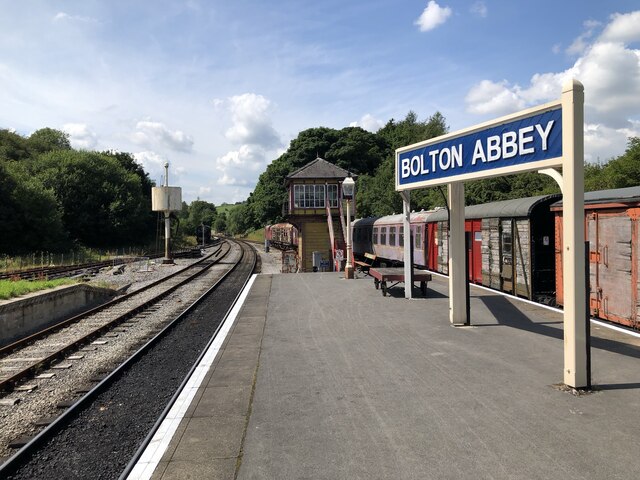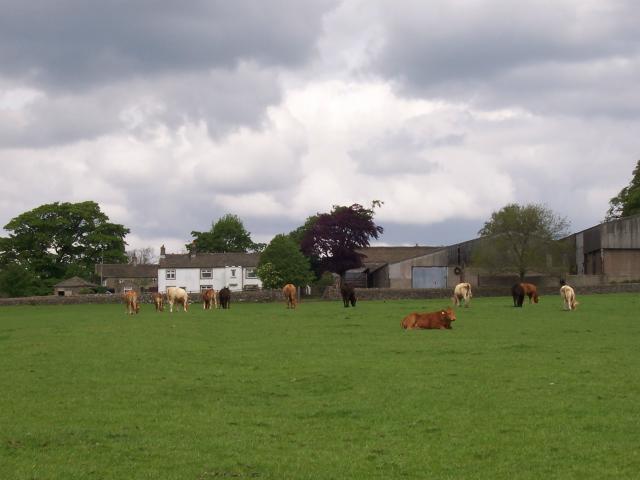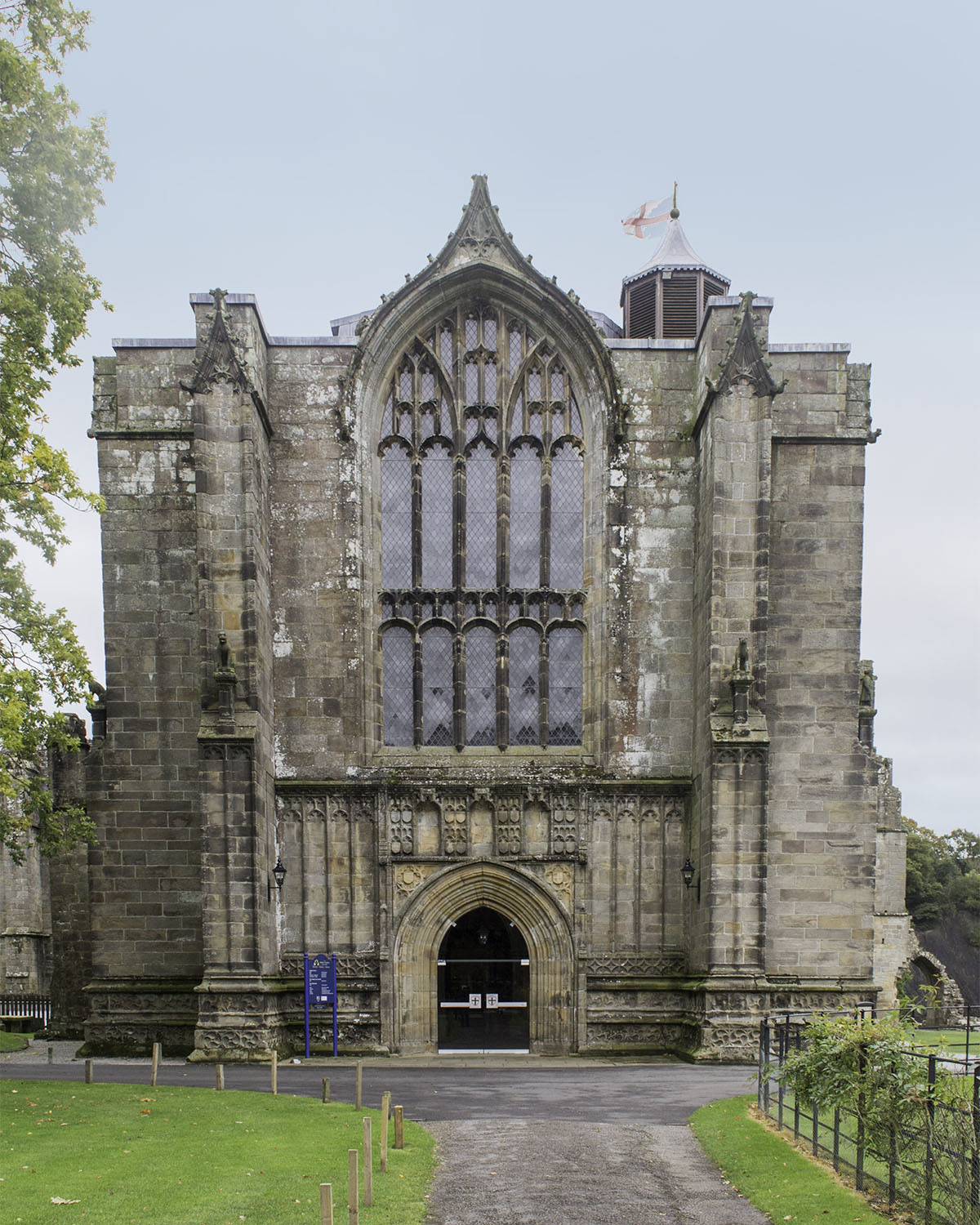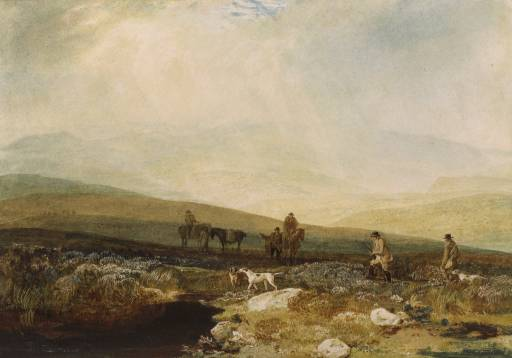Hambleton
Settlement in Yorkshire Craven
England
Hambleton

Hambleton is a district and non-metropolitan county in the northern region of Yorkshire, England. Situated in the heart of the North York Moors National Park, Hambleton covers an area of approximately 1,311 square kilometers and is home to a population of around 91,500 people.
The district is characterized by its picturesque countryside, charming villages, and historic market towns. It boasts a rich heritage, with evidence of human settlement dating back to the Roman times. Visitors to Hambleton can explore numerous ancient landmarks, such as the ruins of Rievaulx Abbey, Mount Grace Priory, and Byland Abbey.
The area is renowned for its natural beauty, offering breathtaking landscapes of rolling hills, valleys, and forests. Outdoor enthusiasts can enjoy a variety of activities, including hiking, cycling, and horse riding along the many scenic trails that crisscross the district. The North York Moors Railway, a heritage steam railway, also attracts visitors who revel in the nostalgic charm of the locomotives and the stunning views of the countryside.
Hambleton is not only a haven for nature lovers but also a thriving agricultural region. Its fertile farmland produces a range of high-quality local produce, including cheese, meats, and vegetables, which are celebrated at the numerous farmers' markets and food festivals held throughout the year.
With its tranquil atmosphere, stunning landscapes, and rich cultural heritage, Hambleton offers a perfect escape for those seeking a peaceful retreat or a taste of rural England. Whether it's exploring historical sites, enjoying outdoor activities, or indulging in local delicacies, this district has something to offer for everyone.
If you have any feedback on the listing, please let us know in the comments section below.
Hambleton Images
Images are sourced within 2km of 53.977647/-1.9115465 or Grid Reference SE0553. Thanks to Geograph Open Source API. All images are credited.
![Bolton Abbey, the village and the priory [2] A first view of the ruins of the priory, seen from the path. The River Wharfe flows twice, in a large bend, between the camera and the ruins. The reverse view is seen at <a href="https://www.geograph.org.uk/photo/7020696">SE0754 : Bolton Abbey, the village and the priory [15]</a>.
There was never an abbey here, the monastic settlement was a priory, founded in 1154 by the Augustinian order. Part of the 33,000 acre Devonshire Estate, the village is some 5¼ miles northeast of Skipton. The picturesque ruins of the priory, on the bank of the River Wharfe, adjoin the village.](https://s2.geograph.org.uk/geophotos/07/02/06/7020662_9ed900c2.jpg)
![Bolton Abbey, the village and the priory [3] Alongside the B6160 road stands this memorial to Lord Fredrick Cavendish. Cavendish, a Liberal politician, was appointed Chief Secretary for Ireland in May 1882 but was murdered only hours after his arrival in Dublin. The memorial, erected in 1886 is hexagonal, constructed in ashlar and contains a fountain. There is another view of the memorial at <a href="https://www.geograph.org.uk/photo/7020666">SE0754 : Bolton Abbey, the village and the priory [4]</a>. Listed, grade II, with details at: <span class="nowrap"><a title="https://historicengland.org.uk/listing/the-list/list-entry/1131777" rel="nofollow ugc noopener" href="https://historicengland.org.uk/listing/the-list/list-entry/1131777">Link</a><img style="margin-left:2px;" alt="External link" title="External link - shift click to open in new window" src="https://s1.geograph.org.uk/img/external.png" width="10" height="10"/></span>
There was never an abbey here, the monastic settlement was a priory, founded in 1154 by the Augustinian order. Part of the 33,000 acre Devonshire Estate, the village is some 5¼ miles northeast of Skipton. The picturesque ruins of the priory, on the bank of the River Wharfe, adjoin the village.](https://s0.geograph.org.uk/geophotos/07/02/06/7020664_f88f782e.jpg)
![Bolton Abbey, the village and the priory [4] Alongside the B6160 road stands this memorial to Lord Fredrick Cavendish. Cavendish, a Liberal politician, was appointed Chief Secretary for Ireland in May 1882 but was murdered only hours after his arrival in Dublin. The memorial, erected in 1886 is hexagonal, constructed in ashlar and contains a fountain. There is another view of the memorial at <a href="https://www.geograph.org.uk/photo/7020664">SE0754 : Bolton Abbey, the village and the priory [3]</a>. Listed, grade II, with details at: <span class="nowrap"><a title="https://historicengland.org.uk/listing/the-list/list-entry/1131777" rel="nofollow ugc noopener" href="https://historicengland.org.uk/listing/the-list/list-entry/1131777">Link</a><img style="margin-left:2px;" alt="External link" title="External link - shift click to open in new window" src="https://s1.geograph.org.uk/img/external.png" width="10" height="10"/></span>
There was never an abbey here, the monastic settlement was a priory, founded in 1154 by the Augustinian order. Part of the 33,000 acre Devonshire Estate, the village is some 5¼ miles northeast of Skipton. The picturesque ruins of the priory, on the bank of the River Wharfe, adjoin the village.](https://s2.geograph.org.uk/geophotos/07/02/06/7020666_50b67f13.jpg)
![Bolton Abbey, the village and the priory [5] Seen from the footpath alongside the B6160 road is this view of the River Wharfe with Waterfall bridge in the distance. The priory ruins on the right bank of the river are hidden in this view.
There was never an abbey here, the monastic settlement was a priory, founded in 1154 by the Augustinian order. Part of the 33,000 acre Devonshire Estate, the village is some 5¼ miles northeast of Skipton. The picturesque ruins of the priory, on the bank of the River Wharfe, adjoin the village.](https://s0.geograph.org.uk/geophotos/07/02/06/7020668_a6c4e1f9.jpg)
![Bolton Abbey, the village and the priory [6] The nave of the priory church has been used as a parish church since the dissolution. The churchyard, seen here, contains many interesting table tombs and chest tombs.
The church has parts from the late 12th, 13th, 14th and 16th centuries and was restored in 1875-60. Constructed of a mix of ashlar and squared, coursed rubble stone, all under a lead roof. The church is listed, grade I, with details at: <span class="nowrap"><a title="https://historicengland.org.uk/listing/the-list/list-entry/1166745" rel="nofollow ugc noopener" href="https://historicengland.org.uk/listing/the-list/list-entry/1166745">Link</a><img style="margin-left:2px;" alt="External link" title="External link - shift click to open in new window" src="https://s1.geograph.org.uk/img/external.png" width="10" height="10"/></span>
The priory of St Mary was a house of Augustinian canons, suppressed in 1539. The remains date from the late 12th, 13th and 14th centuries. Constructed of a mix of ashlar and rubble stone. The transepts and chancel still stand at near their original height, other priory buildings remain only at foundation level. Listed, grade I, with details at: <span class="nowrap"><a title="https://historicengland.org.uk/listing/the-list/list-entry/1131775" rel="nofollow ugc noopener" href="https://historicengland.org.uk/listing/the-list/list-entry/1131775">Link</a><img style="margin-left:2px;" alt="External link" title="External link - shift click to open in new window" src="https://s1.geograph.org.uk/img/external.png" width="10" height="10"/></span>
The extensive site of the priory is a Scheduled Ancient Monument with details at: <span class="nowrap"><a title="https://historicengland.org.uk/listing/the-list/list-entry/1015684" rel="nofollow ugc noopener" href="https://historicengland.org.uk/listing/the-list/list-entry/1015684">Link</a><img style="margin-left:2px;" alt="External link" title="External link - shift click to open in new window" src="https://s1.geograph.org.uk/img/external.png" width="10" height="10"/></span>
There was never an abbey here, the monastic settlement was a priory, founded in 1154 by the Augustinian order. Part of the 33,000 acre Devonshire Estate, the village is some 5¼ miles northeast of Skipton. The picturesque ruins of the priory, on the bank of the River Wharfe, adjoin the village.](https://s1.geograph.org.uk/geophotos/07/02/06/7020681_9efc0484.jpg)
![Bolton Abbey, the village and the priory [7] In the churchyard of the church of St Mary, stands this cross, erected by the tenants of his estate in memory of Lord Fredrick Cavendish. Cavendish, a Liberal politician, was appointed Chief Secretary for Ireland in May 1882 but was murdered only hours after his arrival in Dublin.
There was never an abbey here, the monastic settlement was a priory, founded in 1154 by the Augustinian order. Part of the 33,000 acre Devonshire Estate, the village is some 5¼ miles northeast of Skipton. The picturesque ruins of the priory, on the bank of the River Wharfe, adjoin the village.](https://s2.geograph.org.uk/geophotos/07/02/06/7020682_47894ba5.jpg)
![Bolton Abbey, the village and the priory [8] The remains of the priory and the churchyard.
The nave of the priory church has been used as a parish church since the dissolution. The church has parts from the late 12th, 13th, 14th and 16th centuries and was restored in 1875-60. Constructed of a mix of ashlar and squared, coursed rubble stone, all under a lead roof. The church is listed, grade I, with details at: <span class="nowrap"><a title="https://historicengland.org.uk/listing/the-list/list-entry/1166745" rel="nofollow ugc noopener" href="https://historicengland.org.uk/listing/the-list/list-entry/1166745">Link</a><img style="margin-left:2px;" alt="External link" title="External link - shift click to open in new window" src="https://s1.geograph.org.uk/img/external.png" width="10" height="10"/></span>
The priory of St Mary was a house of Augustinian canons, suppressed in 1539. The remains date from the late 12th, 13th and 14th centuries. Constructed of a mix of ashlar and rubble stone. The transepts and chancel still stand at near their original height, other priory buildings remain only at foundation level. Listed, grade I, with details at: <span class="nowrap"><a title="https://historicengland.org.uk/listing/the-list/list-entry/1131775" rel="nofollow ugc noopener" href="https://historicengland.org.uk/listing/the-list/list-entry/1131775">Link</a><img style="margin-left:2px;" alt="External link" title="External link - shift click to open in new window" src="https://s1.geograph.org.uk/img/external.png" width="10" height="10"/></span>
The extensive site of the priory is a Scheduled Ancient Monument with details at: <span class="nowrap"><a title="https://historicengland.org.uk/listing/the-list/list-entry/1015684" rel="nofollow ugc noopener" href="https://historicengland.org.uk/listing/the-list/list-entry/1015684">Link</a><img style="margin-left:2px;" alt="External link" title="External link - shift click to open in new window" src="https://s1.geograph.org.uk/img/external.png" width="10" height="10"/></span>
There was never an abbey here, the monastic settlement was a priory, founded in 1154 by the Augustinian order. Part of the 33,000 acre Devonshire Estate, the village is some 5¼ miles northeast of Skipton. The picturesque ruins of the priory, on the bank of the River Wharfe, adjoin the village.](https://s3.geograph.org.uk/geophotos/07/02/06/7020683_2811ae07.jpg)
![Bolton Abbey, the village and the priory [9] The remains of the chancel of the priory church. The nave of the church remains in use as the parish church.
The priory of St Mary was a house of Augustinian canons, suppressed in 1539. The remains date from the late 12th, 13th and 14th centuries. Constructed of a mix of ashlar and rubble stone. The transepts and chancel still stand at near their original height, other priory buildings remain only at foundation level. Listed, grade I, with details at: <span class="nowrap"><a title="https://historicengland.org.uk/listing/the-list/list-entry/1131775" rel="nofollow ugc noopener" href="https://historicengland.org.uk/listing/the-list/list-entry/1131775">Link</a><img style="margin-left:2px;" alt="External link" title="External link - shift click to open in new window" src="https://s1.geograph.org.uk/img/external.png" width="10" height="10"/></span>
The extensive site of the priory is a Scheduled Ancient Monument with details at: <span class="nowrap"><a title="https://historicengland.org.uk/listing/the-list/list-entry/1015684" rel="nofollow ugc noopener" href="https://historicengland.org.uk/listing/the-list/list-entry/1015684">Link</a><img style="margin-left:2px;" alt="External link" title="External link - shift click to open in new window" src="https://s1.geograph.org.uk/img/external.png" width="10" height="10"/></span>
There was never an abbey here, the monastic settlement was a priory, founded in 1154 by the Augustinian order. Part of the 33,000 acre Devonshire Estate, the village is some 5¼ miles northeast of Skipton. The picturesque ruins of the priory, on the bank of the River Wharfe, adjoin the village.](https://s0.geograph.org.uk/geophotos/07/02/06/7020684_79350a81.jpg)
![Bolton Abbey, the village and the priory [10] The remains of the priory. The nave of the priory church has been used as a parish church since the dissolution. The church has parts from the late 12th, 13th, 14th and 16th centuries and was restored in 1875-60. Constructed of a mix of ashlar and squared, coursed rubble stone, all under a lead roof. The church is listed, grade I, with details at: <span class="nowrap"><a title="https://historicengland.org.uk/listing/the-list/list-entry/1166745" rel="nofollow ugc noopener" href="https://historicengland.org.uk/listing/the-list/list-entry/1166745">Link</a><img style="margin-left:2px;" alt="External link" title="External link - shift click to open in new window" src="https://s1.geograph.org.uk/img/external.png" width="10" height="10"/></span>
The priory of St Mary was a house of Augustinian canons, suppressed in 1539. The remains date from the late 12th, 13th and 14th centuries. Constructed of a mix of ashlar and rubble stone. The transepts and chancel still stand at near their original height, other priory buildings remain only at foundation level. Listed, grade I, with details at: <span class="nowrap"><a title="https://historicengland.org.uk/listing/the-list/list-entry/1131775" rel="nofollow ugc noopener" href="https://historicengland.org.uk/listing/the-list/list-entry/1131775">Link</a><img style="margin-left:2px;" alt="External link" title="External link - shift click to open in new window" src="https://s1.geograph.org.uk/img/external.png" width="10" height="10"/></span>
The extensive site of the priory is a Scheduled Ancient Monument with details at: <span class="nowrap"><a title="https://historicengland.org.uk/listing/the-list/list-entry/1015684" rel="nofollow ugc noopener" href="https://historicengland.org.uk/listing/the-list/list-entry/1015684">Link</a><img style="margin-left:2px;" alt="External link" title="External link - shift click to open in new window" src="https://s1.geograph.org.uk/img/external.png" width="10" height="10"/></span>
There was never an abbey here, the monastic settlement was a priory, founded in 1154 by the Augustinian order. Part of the 33,000 acre Devonshire Estate, the village is some 5¼ miles northeast of Skipton. The picturesque ruins of the priory, on the bank of the River Wharfe, adjoin the village.](https://s1.geograph.org.uk/geophotos/07/02/06/7020685_3ce58e26.jpg)
![Bolton Abbey, the village and the priory [11] A plaque on the wall of the church. The nave of the priory church has been used as a parish church since the dissolution. The church has parts from the late 12th, 13th, 14th and 16th centuries and was restored in 1875-60. Constructed of a mix of ashlar and squared, coursed rubble stone, all under a lead roof. The church is listed, grade I, with details at: <span class="nowrap"><a title="https://historicengland.org.uk/listing/the-list/list-entry/1166745" rel="nofollow ugc noopener" href="https://historicengland.org.uk/listing/the-list/list-entry/1166745">Link</a><img style="margin-left:2px;" alt="External link" title="External link - shift click to open in new window" src="https://s1.geograph.org.uk/img/external.png" width="10" height="10"/></span>
The priory of St Mary was a house of Augustinian canons, suppressed in 1539. The remains date from the late 12th, 13th and 14th centuries. Constructed of a mix of ashlar and rubble stone. The transepts and chancel still stand at near their original height, other priory buildings remain only at foundation level. Listed, grade I, with details at: <span class="nowrap"><a title="https://historicengland.org.uk/listing/the-list/list-entry/1131775" rel="nofollow ugc noopener" href="https://historicengland.org.uk/listing/the-list/list-entry/1131775">Link</a><img style="margin-left:2px;" alt="External link" title="External link - shift click to open in new window" src="https://s1.geograph.org.uk/img/external.png" width="10" height="10"/></span>
The extensive site of the priory is a Scheduled Ancient Monument with details at: <span class="nowrap"><a title="https://historicengland.org.uk/listing/the-list/list-entry/1015684" rel="nofollow ugc noopener" href="https://historicengland.org.uk/listing/the-list/list-entry/1015684">Link</a><img style="margin-left:2px;" alt="External link" title="External link - shift click to open in new window" src="https://s1.geograph.org.uk/img/external.png" width="10" height="10"/></span>
There was never an abbey here, the monastic settlement was a priory, founded in 1154 by the Augustinian order. Part of the 33,000 acre Devonshire Estate, the village is some 5¼ miles northeast of Skipton. The picturesque ruins of the priory, on the bank of the River Wharfe, adjoin the village.](https://s3.geograph.org.uk/geophotos/07/02/06/7020687_75954e6f.jpg)
![Bolton Abbey, the village and the priory [12] The original west front of the priory church is hidden by the uncompleted 16th century west tower. This is now the doorway into the tower.
The nave of the priory church has been used as a parish church since the dissolution. The church has parts from the late 12th, 13th, 14th and 16th centuries and was restored in 1875-60. Constructed of a mix of ashlar and squared, coursed rubble stone, all under a lead roof. The church is listed, grade I, with details at: <span class="nowrap"><a title="https://historicengland.org.uk/listing/the-list/list-entry/1166745" rel="nofollow ugc noopener" href="https://historicengland.org.uk/listing/the-list/list-entry/1166745">Link</a><img style="margin-left:2px;" alt="External link" title="External link - shift click to open in new window" src="https://s1.geograph.org.uk/img/external.png" width="10" height="10"/></span>
The priory of St Mary was a house of Augustinian canons, suppressed in 1539. The remains date from the late 12th, 13th and 14th centuries. Constructed of a mix of ashlar and rubble stone. The transepts and chancel still stand at near their original height, other priory buildings remain only at foundation level. Listed, grade I, with details at: <span class="nowrap"><a title="https://historicengland.org.uk/listing/the-list/list-entry/1131775" rel="nofollow ugc noopener" href="https://historicengland.org.uk/listing/the-list/list-entry/1131775">Link</a><img style="margin-left:2px;" alt="External link" title="External link - shift click to open in new window" src="https://s1.geograph.org.uk/img/external.png" width="10" height="10"/></span>
The extensive site of the priory is a Scheduled Ancient Monument with details at: <span class="nowrap"><a title="https://historicengland.org.uk/listing/the-list/list-entry/1015684" rel="nofollow ugc noopener" href="https://historicengland.org.uk/listing/the-list/list-entry/1015684">Link</a><img style="margin-left:2px;" alt="External link" title="External link - shift click to open in new window" src="https://s1.geograph.org.uk/img/external.png" width="10" height="10"/></span>
There was never an abbey here, the monastic settlement was a priory, founded in 1154 by the Augustinian order. Part of the 33,000 acre Devonshire Estate, the village is some 5¼ miles northeast of Skipton. The picturesque ruins of the priory, on the bank of the River Wharfe, adjoin the village.](https://s0.geograph.org.uk/geophotos/07/02/06/7020692_2bbf7cff.jpg)
![Bolton Abbey, the village and the priory [13] The beautiful 13th century west front of the priory church is now inside the uncompleted 16th century tower.
The nave of the priory church has been used as a parish church since the dissolution. The church has parts from the late 12th, 13th, 14th and 16th centuries and was restored in 1875-60. Constructed of a mix of ashlar and squared, coursed rubble stone, all under a lead roof. The church is listed, grade I, with details at: <span class="nowrap"><a title="https://historicengland.org.uk/listing/the-list/list-entry/1166745" rel="nofollow ugc noopener" href="https://historicengland.org.uk/listing/the-list/list-entry/1166745">Link</a><img style="margin-left:2px;" alt="External link" title="External link - shift click to open in new window" src="https://s1.geograph.org.uk/img/external.png" width="10" height="10"/></span>
The priory of St Mary was a house of Augustinian canons, suppressed in 1539. The remains date from the late 12th, 13th and 14th centuries. Constructed of a mix of ashlar and rubble stone. The transepts and chancel still stand at near their original height, other priory buildings remain only at foundation level. Listed, grade I, with details at: <span class="nowrap"><a title="https://historicengland.org.uk/listing/the-list/list-entry/1131775" rel="nofollow ugc noopener" href="https://historicengland.org.uk/listing/the-list/list-entry/1131775">Link</a><img style="margin-left:2px;" alt="External link" title="External link - shift click to open in new window" src="https://s1.geograph.org.uk/img/external.png" width="10" height="10"/></span>
The extensive site of the priory is a Scheduled Ancient Monument with details at: <span class="nowrap"><a title="https://historicengland.org.uk/listing/the-list/list-entry/1015684" rel="nofollow ugc noopener" href="https://historicengland.org.uk/listing/the-list/list-entry/1015684">Link</a><img style="margin-left:2px;" alt="External link" title="External link - shift click to open in new window" src="https://s1.geograph.org.uk/img/external.png" width="10" height="10"/></span>
There was never an abbey here, the monastic settlement was a priory, founded in 1154 by the Augustinian order. Part of the 33,000 acre Devonshire Estate, the village is some 5¼ miles northeast of Skipton. The picturesque ruins of the priory, on the bank of the River Wharfe, adjoin the village.](https://s2.geograph.org.uk/geophotos/07/02/06/7020694_ec4ad24a.jpg)
![Bolton Abbey, the village and the priory [14] The nave of the priory church has been used as a parish church since the dissolution. The church has parts from the late 12th, 13th, 14th and 16th centuries and was restored in 1875-60. Constructed of a mix of ashlar and squared, coursed rubble stone, all under a lead roof. The church is listed, grade I, with details at: <span class="nowrap"><a title="https://historicengland.org.uk/listing/the-list/list-entry/1166745" rel="nofollow ugc noopener" href="https://historicengland.org.uk/listing/the-list/list-entry/1166745">Link</a><img style="margin-left:2px;" alt="External link" title="External link - shift click to open in new window" src="https://s1.geograph.org.uk/img/external.png" width="10" height="10"/></span>
The priory of St Mary was a house of Augustinian canons, suppressed in 1539. The remains date from the late 12th, 13th and 14th centuries. Constructed of a mix of ashlar and rubble stone. The transepts and chancel still stand at near their original height, other priory buildings remain only at foundation level. Listed, grade I, with details at: <span class="nowrap"><a title="https://historicengland.org.uk/listing/the-list/list-entry/1131775" rel="nofollow ugc noopener" href="https://historicengland.org.uk/listing/the-list/list-entry/1131775">Link</a><img style="margin-left:2px;" alt="External link" title="External link - shift click to open in new window" src="https://s1.geograph.org.uk/img/external.png" width="10" height="10"/></span>
The extensive site of the priory is a Scheduled Ancient Monument with details at: <span class="nowrap"><a title="https://historicengland.org.uk/listing/the-list/list-entry/1015684" rel="nofollow ugc noopener" href="https://historicengland.org.uk/listing/the-list/list-entry/1015684">Link</a><img style="margin-left:2px;" alt="External link" title="External link - shift click to open in new window" src="https://s1.geograph.org.uk/img/external.png" width="10" height="10"/></span>
There was never an abbey here, the monastic settlement was a priory, founded in 1154 by the Augustinian order. Part of the 33,000 acre Devonshire Estate, the village is some 5¼ miles northeast of Skipton. The picturesque ruins of the priory, on the bank of the River Wharfe, adjoin the village.](https://s3.geograph.org.uk/geophotos/07/02/06/7020695_f7c4b4b3.jpg)
![Bolton Abbey, the village and the priory [16] Rectory Cottage, formerly the Old Rectory, was built in the 15th century and greatly altered in the late 17th century. The building was originally the priory infirmary, later becoming Boyle School. Constructed of rubble stone with ashlar dressings under a stone slate roof. Listed, grade II*, with details at: <span class="nowrap"><a title="https://historicengland.org.uk/listing/the-list/list-entry/1131776" rel="nofollow ugc noopener" href="https://historicengland.org.uk/listing/the-list/list-entry/1131776">Link</a><img style="margin-left:2px;" alt="External link" title="External link - shift click to open in new window" src="https://s1.geograph.org.uk/img/external.png" width="10" height="10"/></span>
There was never an abbey here, the monastic settlement was a priory, founded in 1154 by the Augustinian order. Part of the 33,000 acre Devonshire Estate, the village is some 5¼ miles northeast of Skipton. The picturesque ruins of the priory, on the bank of the River Wharfe, adjoin the village.](https://s0.geograph.org.uk/geophotos/07/02/07/7020724_73e702bd.jpg)
Hambleton is located at Grid Ref: SE0553 (Lat: 53.977647, Lng: -1.9115465)
Division: West Riding
Administrative County: North Yorkshire
District: Craven
Police Authority: North Yorkshire
What 3 Words
///lanes.hacksaw.coining. Near Addingham, West Yorkshire
Nearby Locations
Related Wikis
Bolton Abbey railway station
Bolton Abbey railway station is on the Embsay and Bolton Abbey Steam Railway. It serves Bolton Abbey, although it is closer to Bolton Bridge, in North...
Bolton Abbey (village)
Bolton Abbey is a village and civil parish in the Craven district of North Yorkshire, England, 22 miles (35 km) north-west of Leeds. The village lies in...
Halton East
Halton East is a village and civil parish in North Yorkshire, England, 3.5 miles (5.6 km) east of Skipton. The population of the parish was estimated...
Bolton Abbey
Bolton Abbey in Wharfedale, North Yorkshire, England, takes its name from the ruins of the 12th-century Augustinian monastery now known as Bolton Priory...
Bolton Priory
Bolton Priory, whose full title is The Priory Church of St Mary and St Cuthbert, Bolton Abbey, is a Grade I listed parish church of the Church of England...
Cavendish memorial fountain
The Cavendish memorial fountain is a drinking fountain erected in 1886 at Bolton Abbey, North Yorkshire, England as a memorial to Lord Frederick Cavendish...
Chelker Reservoir
Chelker Reservoir is a man-made lake in North Yorkshire, England. It lies in the parish of Draughton, immediately north of the A65 road, between Skipton...
Beamsley
Beamsley is a village and civil parish in the Craven district of North Yorkshire, England. It is just within the boundary of the Yorkshire Dales National...
Nearby Amenities
Located within 500m of 53.977647,-1.9115465Have you been to Hambleton?
Leave your review of Hambleton below (or comments, questions and feedback).










